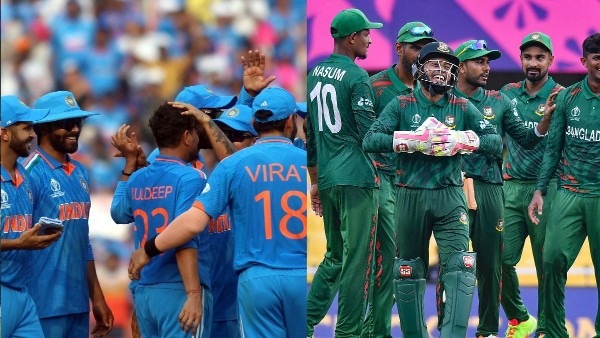
This is not one of cricket’s talked-about contests. It’s not like India versus Pakistan or Australia. Not like Australia against England or New Zealand. Some of these fixtures are rich in history and some have become prominent across a few decades. In comparison, India against Bangladesh has no pedigree as a rivalry. One team has been playing Test cricket since 1932 and the other from 2000.
But is that really true? Didn’t something change in the chemistry of the teams after a sunny day in Port of Spain in 2007?Countries that typified the quintessential big brother-younger brother relationship in the geopolitical sphere, India and Bangladesh used to carry bonhomie on to the field of cricket. That stunner leading to India’s early exit from the World Cup changed the dynamics between the neighboring teams.
Until then, it was India 13 and Bangladesh 1 in ODIs. Most were low-key affairs, side shows part of different tournaments. There had been just one bilateral series, in 2004, which came 16 years after the first match between the countries. Post the Calypso punch, the magnanimous winners and good losers became rivals who didn’t mind needling each other on and off the field.
The Indians played their part in adding spice to what was brewing. Before the 2011 World Cup’s opening match between Bangladesh and India in Dhaka, Virender Sehwag replied to questions about the home team with contempt. The gist of it was that Bangladesh were an average side which had beaten India on stray occasions. He also mentioned revenge when reminded of 2007.
Sehwag’s comments caused discontent across the eastern border. The opener smashed 175, India 370, Bangladesh lost by 87 runs and MS Dhoni’s team went on to win the trophy. The flame refused to die. It was to surface in different places, on different occasions. There was also a marked change on Bangladesh’s side, which added an edge this contest was missing.
In 26 ODIs against Bangladesh since that day in 2007, India have won 18 and lost seven. There was no result in one. Bangladesh beat India in two bilateral series at home. The first of those was in 2015 and the second in 2022, showing that they have sustained the intensity over a period. It’s Bangladesh 3, India 2 in the last five meetings. India lost the most recent one, at the Asia Cup last month.
Bangladesh have approached this match with a distinct change in body language. It started with Mashrafe Mortaza, although the credit sometimes goes to Tamim Iqbal for his assault on Zaheer Khan & Co in the capital of Trinidad and Tobago. Nonetheless, one can sense a rise in passion levels when they take on India. This is great for the contest, as long as limits are maintained.
At times, things got tense. In the 2015 World Cup quarter-final in Melbourne, there was a controversial umpiring call and a few borderline ones. The Bangladeshi media’s eruption saying they were victims of unfair decisions, and the matter eliciting a comment from the Prime Minister, showed how deeply involved the entire country is with cricket, and matches against India.
Tension has been felt also at the junior level. After winning the under-19 World Cup final in Potchefstroom in South Africa in 2020, members of the Bangladesh team allegedly made provocative gestures towards the Indian players. Neither side said anything afterwards. This ended there. Just that it was no secret anymore that India-Bangladesh was not just another match.
Having said that, untoward incidents are outnumbered by positive vibes. Bangladesh have not beaten India at the senior level in a world event after 2007, but it’s impossible to overlook that the gap has narrowed. There was nothing random in their wins at home. They play to their strengths, make plans and stick to them. They believe in their methods.
For a game which likes one-on-one rivalries and sulks when the existing ones start losing sheen, this is a gift. For decades, cricket was sold as a duel, between teams as well as individuals playing for those teams. Now, there are signs of one in the making in a region where cricket is the religion, regardless of faith. That new product is called India-versus-Bangladesh, and it was created in Trinidad and Tobago.




